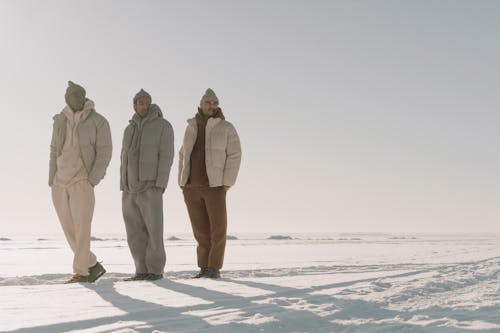
Layering is an essential skill in fashion that allows for both versatility and creativity. Mastering the art of layering not only enhances your style but also ensures you’re prepared for varying weather conditions throughout the year. This comprehensive guide delves into the principles of layering, offering practical tips and style advice for every season, helping you create effortlessly chic and functional outfits all year round.
Understanding the Basics of Layering
Layering involves combining different clothing pieces to create a cohesive look that is both stylish and functional. The key to successful layering is balance and proportion, ensuring that each layer complements rather than competes with the others.
The Principles of Layering
To master layering, consider the following principles:
- Start with a Base Layer: This is your first layer, typically worn close to the skin. It should be comfortable and serve as the foundation of your outfit.
- Add Intermediate Layers: These layers provide additional warmth and style. Think of sweaters, cardigans, and blouses.
- Top with an Outer Layer: The outer layer offers protection from the elements. Jackets, coats, and vests fall into this category.
- Accessorize: Accessories like scarves, hats, and belts add the finishing touches and can be layered as well.
The Benefits of Layering
Layering offers several advantages:
- Versatility: Easily adjust your outfit based on temperature changes throughout the day.
- Style: Layering allows for creative expression and customization of your look.
- Practicality: Provides added warmth and protection from weather conditions.
Layering for Each Season
Different seasons require different layering strategies. Here’s how to approach layering for spring, summer, fall, and winter.
Spring Layering
Spring weather can be unpredictable, so layering helps you adapt to fluctuating temperatures.
Base Layer: Opt for lightweight, breathable fabrics such as cotton or moisture-wicking materials. A simple t-shirt or long-sleeve shirt works well.
Intermediate Layer: Choose a light sweater, denim jacket, or a casual blazer. These layers offer extra warmth without being too heavy.
Outer Layer: A trench coat or lightweight parka is ideal for protecting against spring showers.
Accessories: Add a light scarf or a hat for added style and protection from the elements.
Styling Tips:
- Mix Textures: Combine different textures like denim and cotton to create visual interest.
- Play with Colors: Incorporate pastel shades or floral prints to embrace the spring vibe.
Summer Layering
Layering in summer is more about managing the heat and adding style rather than warmth.
Base Layer: Stick to lightweight and breathable fabrics such as linen or cotton. A tank top or a short-sleeve shirt works well.
Intermediate Layer: Consider a lightweight, sleeveless vest or a kimono. These provide additional style without adding too much heat.
Outer Layer: A light, airy cardigan or a sheer cover-up can be used for evening wear or cooler moments.
Accessories: Sunglasses, a wide-brimmed hat, and a lightweight scarf can add flair and sun protection.
Styling Tips:
- Opt for Lighter Colors: Light colors reflect heat and keep you cooler.
- Experiment with Layers: Try layering different fabrics like linen over cotton for a breezy, summer look.
Fall is the perfect season for experimenting with layering as temperatures gradually drop.
Base Layer: Begin with a comfortable long-sleeve shirt or a thermal top to provide warmth without bulk.
Intermediate Layer: Incorporate sweaters, flannels, or cardigans. Layering these pieces adds warmth and texture.
Outer Layer: A wool coat, leather jacket, or a puffer vest provides protection against the crisp fall air.
Accessories: Scarves, gloves, and beanies add both style and warmth.
Styling Tips:
- Mix Patterns: Combine plaid flannels with solid sweaters for a classic fall look.
- Layer with Denim: Pair denim jackets with cozy sweaters for a versatile outfit.
Winter Layering
Winter requires careful layering to stay warm and stylish.
Base Layer: Use thermal or moisture-wicking materials to keep warm and dry. Long-sleeve shirts and thermal tops are essential.
Intermediate Layer: Opt for insulated sweaters, fleece jackets, or wool pullovers to add warmth.
Outer Layer: Choose a heavy-duty coat, such as a parka, down jacket, or wool overcoat, for maximum protection against the cold.
Accessories: Hats, scarves, gloves, and thermal socks are crucial for staying warm.
Styling Tips:
- Layer Strategically: Use thin, insulating layers rather than one bulky layer for better mobility and warmth.
- Add Color: Bright scarves or colorful mittens can brighten up your winter wardrobe.
Mastering Layering Techniques
Effective layering involves more than just stacking clothing. Here are some techniques to ensure your layered outfits look polished and stylish.
Focus on Proportions
Balance the proportions of your layers to avoid looking bulky:
- Fit Matters: Ensure that each layer fits well and doesn’t add unnecessary bulk.
- Length and Volume: Combine longer and shorter layers to create a balanced silhouette. For example, pair a long cardigan with a shorter top.
Play with Textures and Fabrics
Mixing different textures and fabrics can add depth and interest to your outfit:
- Contrasting Textures: Combine smooth fabrics like silk with textured materials like wool for a visually appealing contrast.
- Layer Wisely: Layering fabrics with different weights can create a cohesive look without overwhelming the body.
Use Accessories Strategically
Accessories play a crucial role in layering:
- Scarves: Use scarves to add color, pattern, and extra warmth. Experiment with different tying techniques for variety.
- Belts: Belts can define your waist and add structure to layered outfits. They also help create a more polished appearance.
Color Coordination
Coordinating colors in layered outfits ensures a harmonious look:
- Stick to a Color Palette: Choose colors that complement each other and fit within a cohesive palette.
- Mix and Match: Experiment with different color combinations, such as layering neutrals with bold hues or incorporating patterns.
Layering for Different Body Types
Layering can be adapted to suit various body types, enhancing your figure and creating flattering silhouettes.
Petite Figures
For petite individuals, layering can help create the illusion of height:
- Opt for Fitted Layers: Choose fitted or tailored layers to avoid overwhelming your frame.
- Avoid Excessive Bulk: Stick to lightweight fabrics and avoid overly voluminous layers.
Tall Figures
Tall individuals can experiment with different layering techniques to enhance their stature:
- Play with Proportions: Incorporate longer layers and mix different lengths to add interest.
- Layering for Balance: Use layering to create a balanced silhouette, avoiding overly long or loose layers.
Curvy Figures
For curvy figures, layering can highlight your shape and create a flattering look:
- Define the Waist: Use belts or fitted layers to accentuate your waistline.
- Mix Textures: Combine different textures and fabrics to add dimension and balance.
Sustainable Layering
Sustainability in fashion involves making mindful choices about the materials and practices you use. Here’s how to incorporate sustainable practices into your layering:
Choose Eco-Friendly Fabrics
Opt for fabrics that have a lower environmental impact:
- Organic Cotton: Look for base layers made from organic cotton, which is grown without harmful chemicals.
- Recycled Materials: Choose intermediate layers made from recycled fabrics to reduce waste.
Invest in Quality Pieces
High-quality, durable pieces are more sustainable and offer better long-term value:
- Timeless Designs: Invest in classic, versatile items that can be worn across seasons.
- Craftsmanship: Look for well-made garments that will last longer and require fewer replacements.
Practice Responsible Care
Proper care extends the life of your garments:
- Washing: Follow care instructions to reduce wear and tear. Wash clothes in cold water and air dry when possible.
- Repairs: Mend or alter garments to extend their usability instead of discarding them.

Mastering the art of layering allows you to create versatile, stylish outfits that can adapt to changing weather conditions and reflect your personal style. By understanding the principles of layering, experimenting with different techniques, and considering sustainable practices, you can enhance your wardrobe and embrace fashion with confidence throughout the year. Whether you’re preparing for the unpredictable weather of spring, the heat of summer, the crisp air of fall, or the cold of winter, layering provides endless opportunities to express yourself and stay comfortable. Embrace these tips and techniques to elevate your layering game and make the most of your wardrobe in every season.











